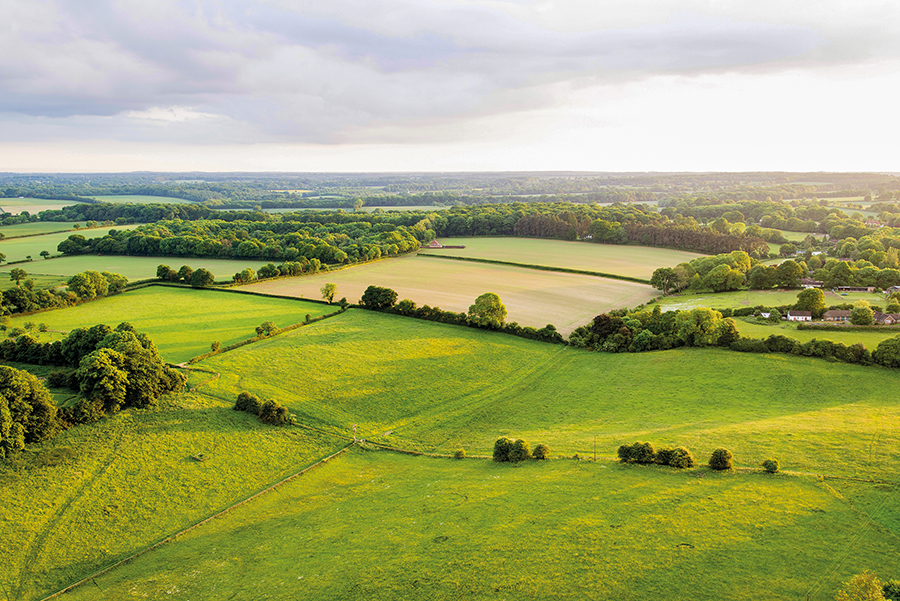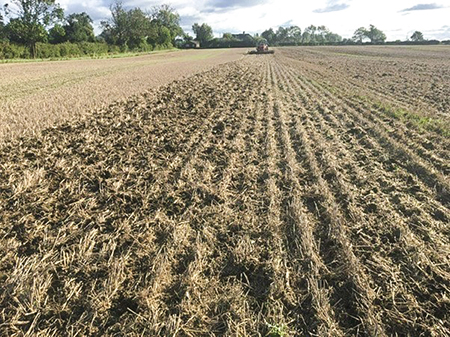A closer look at the latest SFI offer
28th June 2024
Defra’s ‘expanded and improved’ SFI is available to farmers from July 2024. Sarah Kidby explores the new offering in more depth.

Some of the headline changes to the Sustainable Farming Incentive (SFI), include a substantial increase in the number of actions available – 102 compared to the previous 23. This includes 23 new actions, covering precision farming, moorland, flood and water management, agroforestry and no till farming. Additionally, 57 improved versions of actions previously offered through CS Mid Tier have been added to the SFI to streamline applications. This includes actions that have been reduced from five years to three years, to align better with tenant farmers’ needs.
As well as a new and expanded offer for upland farmers, and more actions for tenants on short-term contracts, the SFI is open to new entrants and those farming on commons for the first time.
A new category of endorsed actions has also been added, to make more actions available without the need for a bespoke Higher Tier agreement. These actions do require some approval by Historic England or Natural England (or their contractors). One of the 102 endorsed actions is GRH6: Manage priority species-rich grassland, which will be available for applications when the service opens fully from July 2024. A further 15 endorsed actions will follow later this year.
Meanwhile, increased payments announced in February will be paid for the first time this summer, split across quarterly payments in the first year. The management payment is £40/ha for up to the first 50ha entered into an eligible agreement, and £20/ha for the first 50ha for years two and three.
A new digital tool has also been launched to signpost farmers toward available funding
What’s next?
Later in 2024, an educational access action is due for roll out, and will pay farmers to provide educational tours of their farm or woodland. Further endorsed SFI actions are also on the way for farmland wildlife and habitats on grassland, heritage, wood pasture, orchards, coastal habitats and waterbodies. Details of these additional actions had not been published at the time of writing, but are expected this summer.
Also this summer, Defra is due to publish information on who is eligible for CS Higher Tier, and how to apply and request specialist advice. Applications open in winter, with agreements starting in January 2025. Defra said it has been improving the offer, making it simpler and reducing the burden of seeking advice and endorsement.
From September, those with a CS Mid Tier or Higher Level Stewardship (HLS) agreement will be able to end their agreement early to apply for a SFI agreement, or CS Higher Tier once it opens for applications this winter. Farmers are also able to apply for an expanded SFI agreement to run alongside their existing agreement if they meet the criteria.
New caps added
In late March, responding to concerns about loss of productive land, Defra introduced a cap (25%) on the amount of land that can be entered into new SFI schemes under six actions. This limit will now apply to a further four similar actions in the expanded offer. Therefore, farmers can only apply any combination of all 10 actions on a maximum of 25% of their land.
The four additional actions are:
- WBD3: In-field grass strips
- AHW9: Unharvested cereal headland
- AHW1: Bumblebird mix
- AHW11: Cultivated areas for arable plants.
The list will be kept under review and Defra will consult with the sector on capping another four actions: beetle banks (AHW3); nesting plots for lapwing (AHW5); manage woodland edges on arable land (AHW12) and create scrub and open habitat mosaics (SCR1). These have not been capped so far, because their uptake tends to be limited to smaller areas. An update on this is expected in July.
The Rural Payments Agency invited a mix of farmers to take part in a controlled roll out of the expanded offer, ahead of applications opening to the wider sector on 22nd July.
To apply, register your interest with the Rural Payments Agency.
Using VOS on tine drills for SOH1 payments
The aim of the SOH1 SFI action, which pays £73/ha/year, is to use no-till techniques to minimise soil disturbance. The purpose is to: improve soil health, fertility, structure, soil water storage and reduce soil runoff. Also to keep organic matter and nutrients in the soil, provide benefits for carbon, water quality and biodiversity and protect historic environment features.

Using Bourgault VOS on your tine drill achieves all the above requirements and has been doing so for many years, Bourgault Tillage Tools (BTT) says. This proven system has been available through water catchment grants on offer by some UK water companies for this reason.
Canada has been using direct seeding and conservation farming since the late 1970s and early 1980s. In the mid-80s, no-till farming became more widely used, and BTT has been supplying farmers with seeding tips/coulters ever since.
Designs and materials may have changed over the years, but the principles of no-till are the same. The use of high chrome materials in BTT’s tips and the addition of carbide tiles and a full R&D design team all working to ISO 9001 have kept BTT a “global leader” in this market working with OEMs and farmers alike.
For further information contact BTT UK or visit the website
Read more arable news



